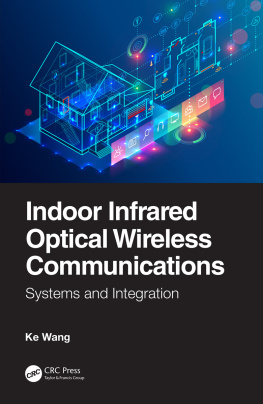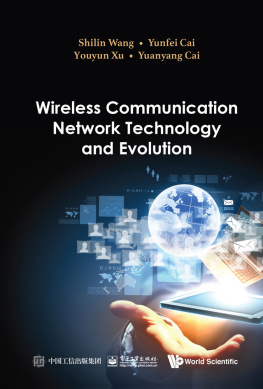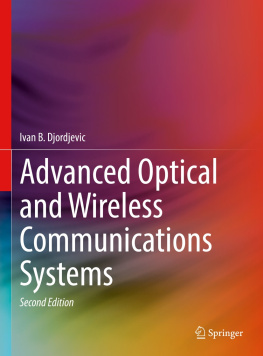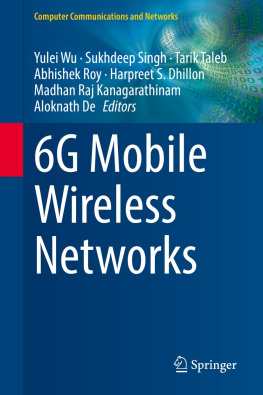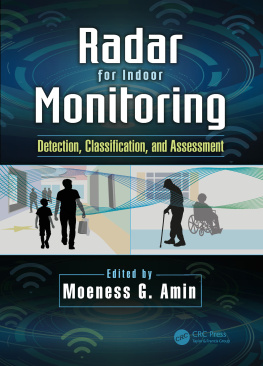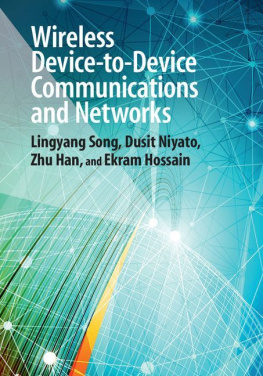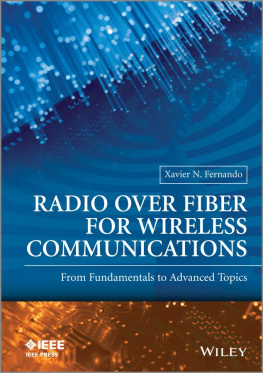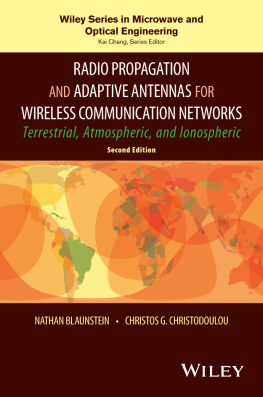Contents
Page List
Guide

Indoor Infrared Optical Wireless Communications
CRC Press
Taylor & Francis Group
6000 Broken Sound Parkway NW, Suite 300
Boca Raton, FL 33487-2742
2020 by Taylor & Francis Group, LLC
CRC Press is an imprint of Taylor & Francis Group, an Informa business
No claim to original U.S. Government works
Printed on acid-free paper
International Standard Book Number-13: 978-0-367-25424-7 (Hardback)
This book contains information obtained from authentic and highly regarded sources. Reasonable efforts have been made to publish reliable data and information, but the author and publisher cannot assume responsibility for the validity of all materials or the consequences of their use. The authors and publishers have attempted to trace the copyright holders of all material reproduced in this publication and apologize to copyright holders if permission to publish in this form has not been obtained. If any copyright material has not been acknowledged please write and let us know so we may rectify in any future reprint.
Except as permitted under U.S. Copyright Law, no part of this book may be reprinted, reproduced, transmitted, or utilized in any form by any electronic, mechanical, or other means, now known or hereafter invented, including photocopying, microfilming, and recording, or in any information storage or retrieval system, without written permission from the publishers.
For permission to photocopy or use material electronically from this work, please access www.copyright.com (http://www.copyright.com/) or contact the Copyright Clearance Center, Inc. (CCC), 222 Rosewood Drive, Danvers, MA 01923, 978-750-8400. CCC is a not-for-profit organization that provides licenses and registration for a variety of users. For organizations that have been granted a photocopy license by the CCC, a separate system of payment has been arranged.
Trademark Notice: Product or corporate names may be trademarks or registered trademarks, and are used only for identification and explanation without intent to infringe.
Visit the Taylor & Francis Web site at
http://www.taylorandfrancis.com
and the CRC Press Web site at
http://www.crcpress.com
Contents
We have witnessed the rapid development of wireless communications in the past couple of decades, and currently 4G (and upcoming 5G) and WiFi technologies are surrounding us to provide high-speed wireless connections. The availability of high-speed wireless networks is changing our daily lives. For example, commuters can now watch streaming videos, check emails, or play online games on buses or trains, and students can access digital library collections and professional software everywhere on campus. With the emerging speed-hungry applications, such as ultra-high-definition video-on-demand, virtual reality, and augmented reality, even higher wireless communication speed is expected by end users. Compared with outdoor scenarios, the wireless speed requirement in indoor environments is typically higher, especially in working and living spaces.
To satisfy the ever-growing wireless communication speed requirement in indoor environments, the optical wireless technology has been explored, where the data is carried by the lightwave and transmitted through the wireless link. One key driver for investigating optical wireless communications is the availability of almost unlimited and unregulated bandwidth, which theoretically enables ultra-high-speed wireless connections. Another key advantage of the optical wireless technology is the immunity to traditional electromagnetic interference (EMI), which becomes more attractive due to the co-existence of a large number of wireless systems nowadays.
Indoor optical wireless communications can explore both the visible light range and the near-infrared wavelength range. The visible light communication (VLC) technology becomes increasingly attractive due to the wide deployment of LEDs in the lighting infrastructure, since the LEDs also serve as the transmitters in VLC. On the other hand, the near-infrared optical wireless communication technology can provide higher modulation bandwidth and wireless channel bandwidth, and hence, it is also highly attractive in the future when higher speed is required. This book focuses on near-infrared indoor optical wireless communication technologies and systems, to provide an introduction of this exciting and rapidly developing field. Specifically, this book starts from the basic theories and models, and then discusses various advanced technologies and recent developments.
Although the near-infrared indoor optical wireless technology has seen rapid development during the recent years, there are still a number of challenges to be further studied. For example, the multi-user access principle needs further development and optimization, since traditional principles lack efficiency due to the ultra-high data rate and the physical limitations in optical wireless systems. Another example is the spatial diversity technique for optical wireless communications, where the use of intensity modulation/direct detection results in the loss of phase information for spatial gains. Therefore, this book also aims to inspire more interests and further studies in this emerging field.
Dr. Ke Wang is an Australian Research Council (ARC) DECRA Fellow and Senior Lecturer in the School of Engineering, Royal Melbourne Institute of Technology (RMIT University), VIC, Australia. He worked with The University of Melbourne, Australia, and Stanford University, USA, before joining RMIT University. He has published over 110 peer-reviewed papers in top journals and leading international conferences, including over 20 invited papers. He has been awarded several prestigious national and international awards as recognition of research contributions, such as the Victoria Fellowship, the AIPS Young Tall Poppy Science Award and the Marconi Society Paul Baran Young Scholar Award. His major areas of interest include: silicon photonics integration, opto-electronics-integrated devices and circuits, nanophotonics, optical wireless technology for short-range applications, quasi-passive reconfigurable devices and applications and optical interconnects in data centers and high-performance computing.
In the past decade, we have seen a tremendous increase in the demand of high-speed communications, fuelled by a large number of services and applications that require broadband real-time data transmissions. For example, the retinal 360 video experience in virtual reality (VR) requires at least 600 Mb/s data transmission and an uncompressed 4K TV with 60 frames/second requires over 10 Gb/s communication speed. These applications and requirements have significantly advanced high-speed communication technologies, especially those providing direct access to end users. For example, optical fiber-based broadband access networks (such as passive optical networks (PONs)) are now widely deployed in many countries. Compared to the wired access approach, the wireless high-speed communication is more attractive since mobility is enabled. Therefore, users are not restricted to one particular location, especially with the availability of high-performance mobile terminals, such as mobile phones and tablets. Such a preference is evidenced by the rapid growth of mobile data traffic, where the data traffic of each mobile increased by about 140% in 2018. It is also predicted that the mobile data traffic will increase by a factor of 5 over the next 6 years [].

